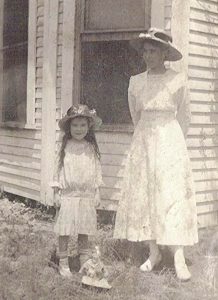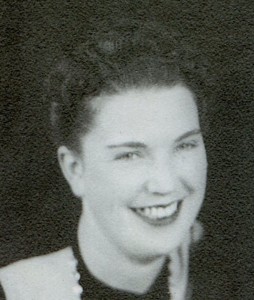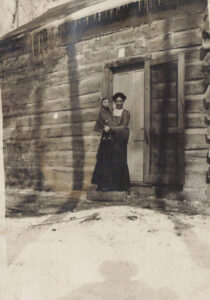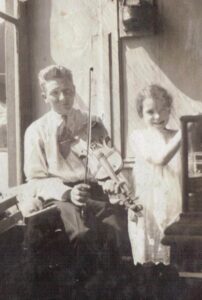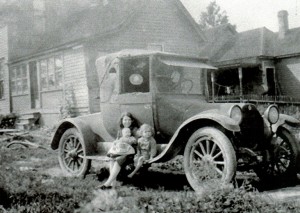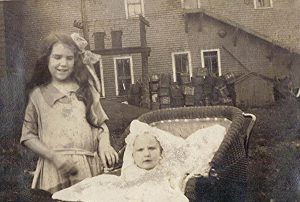minnesota

 My grandnephew, Dylan Herr is one busy guy. Dylan is the owner/manager of Red Wing Shoes in Casper, Wyoming, but now he is also managing all of his family’s Red Wing stores. Because of his new position, Dylan has been traveling to and from Colorado quite often, checking in on the stores and training new hires. Right now, Dylan is in Red Wing Minnesota, with some other managers, looking at all the original Red Wing stuff there. Dylan is really enjoying this trip. In addition to all of his new duties, Dylan is also still working at his store in Casper of course. I know that Dylan’s family really appreciates all his hard work. They are a close family, and family helps family. And Dylan is the man for the job.
My grandnephew, Dylan Herr is one busy guy. Dylan is the owner/manager of Red Wing Shoes in Casper, Wyoming, but now he is also managing all of his family’s Red Wing stores. Because of his new position, Dylan has been traveling to and from Colorado quite often, checking in on the stores and training new hires. Right now, Dylan is in Red Wing Minnesota, with some other managers, looking at all the original Red Wing stuff there. Dylan is really enjoying this trip. In addition to all of his new duties, Dylan is also still working at his store in Casper of course. I know that Dylan’s family really appreciates all his hard work. They are a close family, and family helps family. And Dylan is the man for the job.
The hardest part about all the travel that Dylan is doing right now is being away from his family. Dylan is, first and foremost, a family man. His wife, Katy and son, Max are 
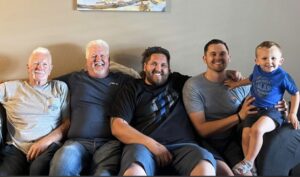 his top priority. All that travel makes spending quality time with family hard, so sometimes Katy and Max “tag along” with Dylan when he travels. That is really nice, and in addition, Dylan makes sure that on his days off, he makes sure to spend his time with Max!! A boy needs time with his daddy, and Dylan is a great daddy.
his top priority. All that travel makes spending quality time with family hard, so sometimes Katy and Max “tag along” with Dylan when he travels. That is really nice, and in addition, Dylan makes sure that on his days off, he makes sure to spend his time with Max!! A boy needs time with his daddy, and Dylan is a great daddy.
Dylan also makes sure to take care of things around the house when he is home. That means doing yard work. Dylan loves his yard. In fact, according to Katy, he is “obsessed” with having a flawless lawn, and never really thinks it’s quite perfect 
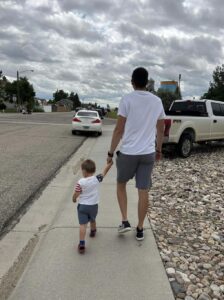 enough. Now if all this isn’t enough, Dylan also spends time going to the gym and playing on a softball team (when he is in town). He has also played in a lot of golf tournaments this summer as well, which is definitely his passion…after his stores, Katy, and Max, of course. Dylan is very dedicated to community. This year, he joined the board of the YMCA and is also part of the Casper Rotary, which he absolutely loves. For Katy, Dylan’s schedule is a extremely overwhelming. She told me that some days, she can’t even keep track of where he’s on a day-to-day basis. Of course, Dylan talks to her every day, but I can certainly see how such a hectic schedule would be hard to keep up with. Today is Dylan’s birthday. Happy birthday Dylan!! Have a great day…wherever you are!! We love you!!
enough. Now if all this isn’t enough, Dylan also spends time going to the gym and playing on a softball team (when he is in town). He has also played in a lot of golf tournaments this summer as well, which is definitely his passion…after his stores, Katy, and Max, of course. Dylan is very dedicated to community. This year, he joined the board of the YMCA and is also part of the Casper Rotary, which he absolutely loves. For Katy, Dylan’s schedule is a extremely overwhelming. She told me that some days, she can’t even keep track of where he’s on a day-to-day basis. Of course, Dylan talks to her every day, but I can certainly see how such a hectic schedule would be hard to keep up with. Today is Dylan’s birthday. Happy birthday Dylan!! Have a great day…wherever you are!! We love you!!
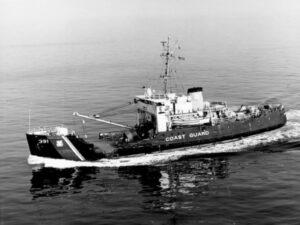 The USCGC Blackthorn (WLB-391) was a 180-foot seagoing buoy tender for the US Coast Guard. A buoy tender is a type of vessel used to maintain and replace navigational buoys. Prior to navigational buoys, ships might run into rocks, small almost submerged islands, or coral reefs. It would be nice if every underwater danger could have a lighthouse, but that just isn’t feasible. Buoys, on the other hand, and markers serve to direct the operator of the water vessels on the safe course to take. They warn the operator of the underlying dangers in the waterways. Navigation buoys and markers are also effective navigation aid in directing the water vessel operator on the best route to use. They aid in determining the safest way through the waters.
The USCGC Blackthorn (WLB-391) was a 180-foot seagoing buoy tender for the US Coast Guard. A buoy tender is a type of vessel used to maintain and replace navigational buoys. Prior to navigational buoys, ships might run into rocks, small almost submerged islands, or coral reefs. It would be nice if every underwater danger could have a lighthouse, but that just isn’t feasible. Buoys, on the other hand, and markers serve to direct the operator of the water vessels on the safe course to take. They warn the operator of the underlying dangers in the waterways. Navigation buoys and markers are also effective navigation aid in directing the water vessel operator on the best route to use. They aid in determining the safest way through the waters.
The Blackthorn was one of 39 original 180-foot seagoing buoy tenders built between 1942-1944. All but one of the original tenders, USCGC Ironwood (WLB-297), were built in Duluth, Minnesota, which makes me wonder if my Uncle Bill Spencer, or his sisters, Laura Fredrick and Ruth Wolfe might have worked on it. Blackthorn’s preliminary design was completed by the United States Lighthouse Service and the final design was produced by Marine Iron and Shipbuilding Corporation in Duluth. On May 21, 1943, the keel was laid, the vessel was launched on July 20, 1943, and commissioned on March 27, 1944. The original cost for the hull and machinery was $876,403.
The Blackthorn was initially assigned to the Great Lakes for ice-breaking duties, but was resigned to San Pedro, California after just a few months. For several years the vessel served in San Pedro and then it was moved to the gulf coast region to serve in Mobile, Alabama. From there it was transferred to Galveston, Texas for the final years of its service until it was involved in an accident.
In 1979-1980, Blackthorn underwent a major overhaul in Tampa, Florida. The work was finished and on January 28, 1980, while leaving Tampa Bay after the completion of the overhaul, she collided with the tanker SS Capricorn near the Tampa Bay Sunshine Skyway Bridge. The Blackthorn capsized resulting in the deaths of 23 crew members. The cutter was raised for the investigation, but ultimately, instead of fixing it, Blackthorn was scuttled in the Gulf of Mexico after the investigation was complete. She is currently serving as an artificial reef for recreational diving and fishing.
 Some of the old west outlaw gangs were so bold that they would rob banks and such in broad daylight without even giving any thought about getting caught. They believed themselves to be invincible. One such gang, was the James-Younger gang. Many of the people in the towns in Minnesota were afraid of the James-Younger gang and rightfully so, but on September 7, 1876, the people of Northfield, Minnesota had had enough!! That morning, the James-Younger gang decided to make a bold daytime robbery of the Northfield Minnesota bank. Much to their surprise, the gang suddenly found itself surrounded by angry townspeople. The gang was nearly wiped out that day.
Some of the old west outlaw gangs were so bold that they would rob banks and such in broad daylight without even giving any thought about getting caught. They believed themselves to be invincible. One such gang, was the James-Younger gang. Many of the people in the towns in Minnesota were afraid of the James-Younger gang and rightfully so, but on September 7, 1876, the people of Northfield, Minnesota had had enough!! That morning, the James-Younger gang decided to make a bold daytime robbery of the Northfield Minnesota bank. Much to their surprise, the gang suddenly found itself surrounded by angry townspeople. The gang was nearly wiped out that day.
The gang started the robbery with a diversion. Five men galloped through the center of town, yelling and shooting their pistols in the air. In the old west, you might see such a display when cowboys got drunk. The men who worked on the cattle ranches would come to town, looking for a good time. Sometimes, things got out of hand, and the partying cowboys would ride through the streets whooping and hollering in a celebratory way…until the sheriff got tired of it anyway. However, this was different, because this was not after a hard day’s work, it was in broad daylight.
At first, the townspeople ran for cover from the five men, while three other men wearing wide-brimmed hats and long dusters took advantage of the distraction to walk unnoticed into the First National Bank. They pulled pistols on the bank cashier and ordered him to open the bank safe. The cashier recognized Jesse James, nevertheless, he stalled, claiming that the safe had a time lock and could not be opened. Somewhat thrown, Jesse James considered his next move, and the cashier took advantage of the moment. In a sudden move, he made a break for the back door. One of the robbers fired twice, hitting the cashier in the shoulder. Nevertheless, the man managed to stumble to safety and sound the alarm.
The citizens of Northfield were done being afraid. They ran to surround the bank and in their rage, they mercilessly shot down the robbers as they tried to escape. A 19-year-old medical student killed one gang member, Clell Miller, while the owner of the Northfield hardware store mortally wounded Bill Chadwell, peppering his body with bullets from a rapid-firing Remington repeater rifle. Jesse’s brother, Frank, was hit in the leg, while their criminal partners…Jim, Cole, and Bob Younger…were also badly wounded.
Jesse was the last one to leave the bank, stopping for a moment to shoot the uncooperative cashier in the head. Then he jumped onto his horse and joined the rest of the survivors as they desperately fled town. Jesse and his brother Frank decided to go their own way after the botched robbery, so they escaped to Dakota Territory. For them, it was a good decision, because the rest of the gang was pursued relentlessly for the next two weeks by a very determined posse. Eventually the posse killed or captured four more of the gang 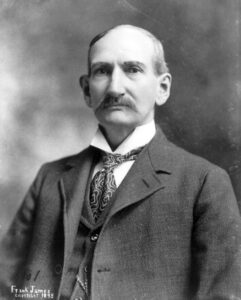 members. After things cooled down, Frank and Jesse James went to Nashville, Tennessee, where they started rebuilding their gang and planning new robberies. On April 3, 1882, a man named Robert Ford drew his weapon and shot the unarmed Jesse James in the back of the head. James’s original grave was on his family property, but he was later moved to a cemetery in Kearney. The original footstone is still there, although the family has replaced the headstone. James’s mother Zerelda Samuel wrote the following epitaph for him: “In Loving Memory of my Beloved Son, Murdered by a Traitor and Coward Whose Name is not Worthy to Appear Here.” James’s widow Zerelda Mimms James died alone and in poverty. Jesse’s older brother, Frank eventually ended his criminal activities. In his final years, he returned to the James Farm, giving tours for the sum of 25 cents. He died there at age 72 on February 18, 1915. He left behind his wife Annie Ralston James and one son. He is interred in Hill Park Cemetery, in the western portion of Independence, Missouri.
members. After things cooled down, Frank and Jesse James went to Nashville, Tennessee, where they started rebuilding their gang and planning new robberies. On April 3, 1882, a man named Robert Ford drew his weapon and shot the unarmed Jesse James in the back of the head. James’s original grave was on his family property, but he was later moved to a cemetery in Kearney. The original footstone is still there, although the family has replaced the headstone. James’s mother Zerelda Samuel wrote the following epitaph for him: “In Loving Memory of my Beloved Son, Murdered by a Traitor and Coward Whose Name is not Worthy to Appear Here.” James’s widow Zerelda Mimms James died alone and in poverty. Jesse’s older brother, Frank eventually ended his criminal activities. In his final years, he returned to the James Farm, giving tours for the sum of 25 cents. He died there at age 72 on February 18, 1915. He left behind his wife Annie Ralston James and one son. He is interred in Hill Park Cemetery, in the western portion of Independence, Missouri.

 My little great grand-nephew, Max Herr is turning one year old today, and he has has a very busy year. Of course, he has done many of the normal baby things like rolling over, sitting up, and clapping his hands. He also says DaDa, has teeth, loves his bath, snuggling with his mommy, Katy Balcerzak, and hanging with his daddy, Dylan Herr. Max has a great smile that lights up his whole face, and his laugh is infectious. He delights in everything new to him…which is everything, so he is always very excited about things he sees and does.
My little great grand-nephew, Max Herr is turning one year old today, and he has has a very busy year. Of course, he has done many of the normal baby things like rolling over, sitting up, and clapping his hands. He also says DaDa, has teeth, loves his bath, snuggling with his mommy, Katy Balcerzak, and hanging with his daddy, Dylan Herr. Max has a great smile that lights up his whole face, and his laugh is infectious. He delights in everything new to him…which is everything, so he is always very excited about things he sees and does.
Max has had a number of wonderful adventures in his first year of life. His family took a trip to Red Wing,  Minnesota; Casper, Wyoming; sunny Florida; the Ice Castles in Dillon, Colorado; the Botanic Gardens in Denver; and they they moved from Brighton, Colorado to Casper, Wyoming. Max had a great time celebrating all the holidays for the very first time. All in all, Max is finding out just how great this celebration called life is.
Minnesota; Casper, Wyoming; sunny Florida; the Ice Castles in Dillon, Colorado; the Botanic Gardens in Denver; and they they moved from Brighton, Colorado to Casper, Wyoming. Max had a great time celebrating all the holidays for the very first time. All in all, Max is finding out just how great this celebration called life is.
For Katy and Dylan, things have changed dramatically. They now have a new boss, because when it comes to Max…well, he is the boss, and he is getting very vocal about letting them know that fact. That’s what happened when Max found his words. Dada and Mama brought his parents running, even if it was just to see what he was saying now, or what he would say next. Then as Max found out that just saying those words brought the 
 chosen parent to him, he started saying it more and more. Of course, sometimes, the parent he wanted wasn’t in close proximity, or as in his daddy’s case, was at work, so the parent didn’t show up immediately, so Max has to say it over and over. Sadly, even the boss doesn’t get everything he wants, all the time. The good thing is that for the most part, Max is a pleasant “boss” to work for. Every time his parents respond to his calls, he presents them not with a grouchy face “barking” orders, but a smiley face, that melts their hearts. No wonder he gets to be the boss. I think that if your boss has a face like this little guy, you would be putty in his hands too. Today is Max’s 1st birthday. Happy birthday Max!! Have a great day!! We love you!!
chosen parent to him, he started saying it more and more. Of course, sometimes, the parent he wanted wasn’t in close proximity, or as in his daddy’s case, was at work, so the parent didn’t show up immediately, so Max has to say it over and over. Sadly, even the boss doesn’t get everything he wants, all the time. The good thing is that for the most part, Max is a pleasant “boss” to work for. Every time his parents respond to his calls, he presents them not with a grouchy face “barking” orders, but a smiley face, that melts their hearts. No wonder he gets to be the boss. I think that if your boss has a face like this little guy, you would be putty in his hands too. Today is Max’s 1st birthday. Happy birthday Max!! Have a great day!! We love you!!

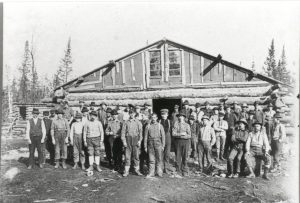 The port city of my birth, Superior, Wisconsin was founded on November 6, 1854 and incorporated March 25 1889. The city’s slogan soon became, “Where Sail Meets Rail,” because it was port connection between the shipping industry and the railroad. Much of Superior’s history parallels its sister city of Duluth’s, but Superior has been around longer than Duluth, which is also known as the Zenith City. Of course, the area had people there before that…there were Ojibwe Indians, and French traders that are known to be in the area in the early 1600s.
The port city of my birth, Superior, Wisconsin was founded on November 6, 1854 and incorporated March 25 1889. The city’s slogan soon became, “Where Sail Meets Rail,” because it was port connection between the shipping industry and the railroad. Much of Superior’s history parallels its sister city of Duluth’s, but Superior has been around longer than Duluth, which is also known as the Zenith City. Of course, the area had people there before that…there were Ojibwe Indians, and French traders that are known to be in the area in the early 1600s.
After the Ojibwe settled in the area and set up an encampment on present-day Madeline Island, the French started arriving. In 1618 voyageur Etienne Brulé paddled along Lake Superior’s south shore where he encountered the Ojibwe tribe, but he also found copper specimens. Brulé went back to Quebec with the copper samples, and a glowing report of the region. French traders and missionaries began settling the area a short time later, and a Lake Superior tributary was named for Brulé. Father Claude Jean Allouez, was one of those missionaries. His is often credited with the development of an early map of the region. Superior’s Allouez neighborhood takes its name from the Catholic missionary. The area was developed quickly after that, and by 1700 the area was crawling with French traders. The French traders developed a good working relationship with the Ojibwe people.
The Ojibwe continued to get along well with the French, but not so much the British, who ruled the area after 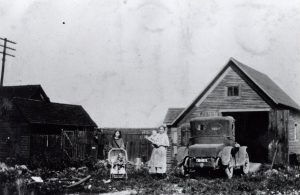
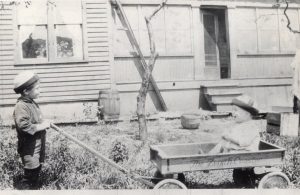 the French, but that ended with the America Revolution and the Treaty of Peace in 1783. The British weren’t as good to the Ojibwe as the French had been. Treaties with the Ojibwe would give more territory to settlers of European descent, and by 1847 the United States had taken control of all lands along Lake Superior’s south shore.
the French, but that ended with the America Revolution and the Treaty of Peace in 1783. The British weren’t as good to the Ojibwe as the French had been. Treaties with the Ojibwe would give more territory to settlers of European descent, and by 1847 the United States had taken control of all lands along Lake Superior’s south shore.
In 1854 the first copper claims were staked at the mouth of the Nemadji River…some say it was actually 1853. The Village of Superior became the county seat of the newly formed Douglas County that same year. The village grew quickly and within two years, about 2,500 people called Superior home. Unfortunately, with the financial panic of 1857, the town’s population stagnated through the end of the Civil War. The building of the Duluth Ship Canal in 1871, which was followed by the Panic of 1873. pretty much crushed Superior’s economic future. Things began to look up when in 1885, Robert Belknap and General John Henry Hammond’s Land and River Improvement Company established West Superior. Immediately they began building elevators, docks, and industrial railroads. In 1890, Superior City and West Superior merged, The city’s population fluctuated, as a boom town will, between 1887 and 1893, and then another financial panic halted progress. Over the years since then, Superior’s population has had it’s ups and down, as has it’s sister city, Duluth, but it has remained about one fourth the size of its twin across the bay.
My great grandparents, Carl and Albertine Schumacher lived in the Goodhue, Minnesota area, when my grandmother Anna was born, but my grandparents Allen and Anna Spencer lived in Superior. That is where my 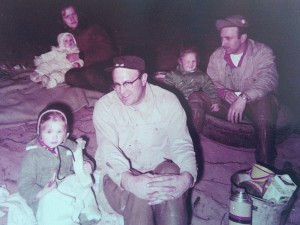
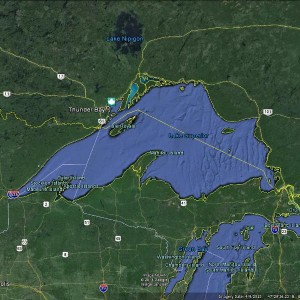 dad, Allen Spencer was born, as were my sister, Cheryl and I. We didn’t live in Superior for all of our lives, just 3 and 5 years, but the area remains in our blood, and in our hearts. It could be partly because of all the trips our family made back to Superior, but I don’t think that’s totally it, because there is just something about knowing that you came from a place, that will always make it special. Superior, Wisconsin is a very special place, that will always be a part of me and my sister, Cheryl too.
dad, Allen Spencer was born, as were my sister, Cheryl and I. We didn’t live in Superior for all of our lives, just 3 and 5 years, but the area remains in our blood, and in our hearts. It could be partly because of all the trips our family made back to Superior, but I don’t think that’s totally it, because there is just something about knowing that you came from a place, that will always make it special. Superior, Wisconsin is a very special place, that will always be a part of me and my sister, Cheryl too.
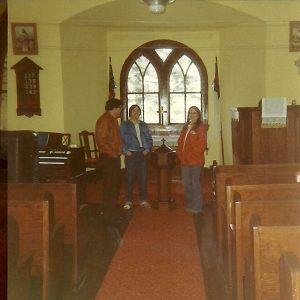
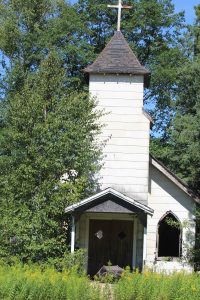 I never got the chance to see the church in the little town of Holyoke, Minnesota, where my dad, Al Spencer and his siblings spent much of their growing up years…at least not before it fell into terrible disrepair. My dad’s parents rented a farm in the area, and the little Lutheran Church in town was their church. The kids helped on the farm and went to school in the area, but the church held a special significance to the family. Of course, being a very religious family, church was the center of their lives. Everything else came after time with the Lord. For me and my sisters, that has been something that our parents, Allen and Collene Spencer carried forward into their marriage, and we will be forever grateful for that solid Christian upbringing. That in many ways got started in that little church in Holyoke, Wisconsin.
I never got the chance to see the church in the little town of Holyoke, Minnesota, where my dad, Al Spencer and his siblings spent much of their growing up years…at least not before it fell into terrible disrepair. My dad’s parents rented a farm in the area, and the little Lutheran Church in town was their church. The kids helped on the farm and went to school in the area, but the church held a special significance to the family. Of course, being a very religious family, church was the center of their lives. Everything else came after time with the Lord. For me and my sisters, that has been something that our parents, Allen and Collene Spencer carried forward into their marriage, and we will be forever grateful for that solid Christian upbringing. That in many ways got started in that little church in Holyoke, Wisconsin.
There was something else that endeared the little church to our family, and really the reason that my family visited it on a trip back to Wisconsin. My Uncle Fritz Fredrick, who was then married to my dad’s sister, Laura, was exceptional at furniture building, and he put that talent into building the baptismal font for the church. It was a really special gift to them. In fact the story of the baptismal font and its special connection to our family is the reason my dad’s brother, Bill Spencer brought the family to the little church in the first place. Of course, my dad knew about the baptismal font, but the rest of the family who were on that trip wanted to see it firsthand. I think the most amazing part of the history of it…to us anyway, was that someone in our family had a part in it.
When the little church closed…sadly, my Uncle Bill asked for the baptismal font. He wanted it to be passed to one of Fritz’s sons. In the end, Fritz’s son Dennis ended up with the baptismal font. I’m sure it was a treasure for him. While the font was a beautiful piece of church furniture, the real treasure is that it was made by his dad’s hands. Many churches have one of a mass produced baptismal font, and they are beautiful, but this one was made with love by the hands of a family member, and that makes this one so much more special. I wish I 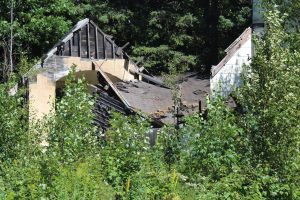
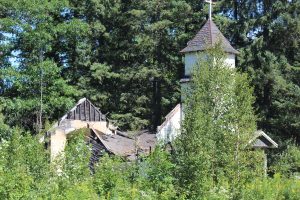 could have seen that baptismal font, in that little church in Holyoke…in the intended setting for it. It think I would have been in awe of both the baptismal font and the church. It made me very sad to see the little church in its final state…when I was finally able to get back to Holyoke. It just seems so wrong to have a church in such dilapidation…a condition that should never be the fate of a church.
could have seen that baptismal font, in that little church in Holyoke…in the intended setting for it. It think I would have been in awe of both the baptismal font and the church. It made me very sad to see the little church in its final state…when I was finally able to get back to Holyoke. It just seems so wrong to have a church in such dilapidation…a condition that should never be the fate of a church.

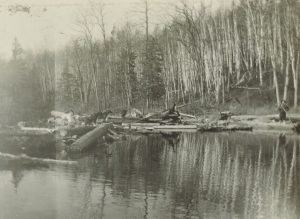 Established as a national forest in 1909, Superior National Forest is located in far northern Minnesota. Big pine timber logging began in the Superior National Forest in the 1890s and continued into the 1920s. Logging was not easy in Superior National Forest, and much of the area remained untouched because of the border lakes region, which presented numerous challenges to the logging companies in accessing and harvesting the stands of timber. In the 1890s, vast extents of the border lakes forests had been stripped away in Michigan and Wisconsin. The early logging was accomplished by means of river driving of logs. That was one of the types of logging that my grandfather was involved in. The logs were cut down,and then floated down the river to the saw mills. The method was a good one, but it could also be dangerous. Many a man was pinched between the logs, and many died. I’m very thankful my grandfather, Allen Luther Spencer was not one of those poor men who lost their lives doing this job. As timber near rivers became depleted, railroad logging became the primary method of getting the wood to the mill. Frozen ground conditions in the winter steered the logging industry to build ice roads providing greater access to timber stands. Logging after 1929 focused more and more on pulp species and the wood products industry.
Established as a national forest in 1909, Superior National Forest is located in far northern Minnesota. Big pine timber logging began in the Superior National Forest in the 1890s and continued into the 1920s. Logging was not easy in Superior National Forest, and much of the area remained untouched because of the border lakes region, which presented numerous challenges to the logging companies in accessing and harvesting the stands of timber. In the 1890s, vast extents of the border lakes forests had been stripped away in Michigan and Wisconsin. The early logging was accomplished by means of river driving of logs. That was one of the types of logging that my grandfather was involved in. The logs were cut down,and then floated down the river to the saw mills. The method was a good one, but it could also be dangerous. Many a man was pinched between the logs, and many died. I’m very thankful my grandfather, Allen Luther Spencer was not one of those poor men who lost their lives doing this job. As timber near rivers became depleted, railroad logging became the primary method of getting the wood to the mill. Frozen ground conditions in the winter steered the logging industry to build ice roads providing greater access to timber stands. Logging after 1929 focused more and more on pulp species and the wood products industry.
Soon, it became evident that the logging industry, while a good a profitable industry, had the potential to deplete the natural resources in the Superior National Forest. In 1921, Arthur Carhart (Forest Landscape Architect) published “Preliminary Prospectus: An Outline Plan for the Recreational Development of the Superior National Forest.” It was released following a survey conducted by Carhart and Forest Guard Soderback in the Boundary Waters region. This publication began to set the framework for the future designation of the BWCAW.
In 1930, Shipstead-Newton-Nolan Act was passed placing restrictions aimed at preserving the wilderness nature of lake and stream shorelines. By 1934, President Franklin D. Roosevelt designated the Quetico-Superior Committee to work with government agencies in the conservation, preservation, and use of northeast Minnesota’s wilderness areas. 1948 brought the Thye-Blatnik Act authorized the federal government to acquire private land holdings within roadless areas, thereby increasing federal acreage within the boundary waters roadless area. In 1949, the passage of Executive Order #10092, established an airspace boundary over the boundary waters roadless area. Highly controversial, this order effectively ended a particular type of recreation in the boundary waters, that of the remote fly-in resort. Resort operators had until 1951 to halt air traffic within 4000 feet of the roadless area.In 1958, The Superior Roadless Areas were renamed the Boundary Waters Canoe Area (BWCA). Conflict over motorized use in the roadless area increased during this time. The passage of the national Wilderness Act in 1964, with special provision regarding the BWCA, allowed some motorized use 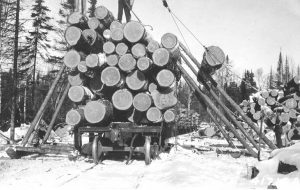
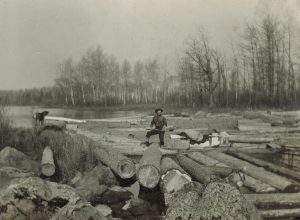 and logging within the Boundary Water’s wilderness boundaries, but by 1978, with the passage of the Boundary Waters Canoe Area Wilderness Act, which was specific to the BWCAW. This legislation eliminated logging and snowmobiling, restricted mining and allowed motorboats on 1/4 of the water area. While logging is necessary, I can’t help but agree with the preservation of the beautiful Superior National Forest.
and logging within the Boundary Water’s wilderness boundaries, but by 1978, with the passage of the Boundary Waters Canoe Area Wilderness Act, which was specific to the BWCAW. This legislation eliminated logging and snowmobiling, restricted mining and allowed motorboats on 1/4 of the water area. While logging is necessary, I can’t help but agree with the preservation of the beautiful Superior National Forest.
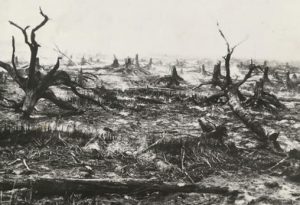 Where there is a forest, there is a possibility of a massive forest fire. The area around Moose Lake in Minnesota, had just such a fire that started on October 12, 1918. The fire, known as the Cloquet-Moose Lake fire, killed hundreds of people and leaving thousands of people homeless. The fire burned a hug area at least 1,500 square miles. The fire, which began at the rail lines near Sturgeon Lake, did the most damage in the Cloquet and Moose Lake areas. This is a region of Minnesota, north of Duluth in the eastern part of the state.
Where there is a forest, there is a possibility of a massive forest fire. The area around Moose Lake in Minnesota, had just such a fire that started on October 12, 1918. The fire, known as the Cloquet-Moose Lake fire, killed hundreds of people and leaving thousands of people homeless. The fire burned a hug area at least 1,500 square miles. The fire, which began at the rail lines near Sturgeon Lake, did the most damage in the Cloquet and Moose Lake areas. This is a region of Minnesota, north of Duluth in the eastern part of the state.
The area was really a recipe for a major disaster of this sort. The timber industry used a crude 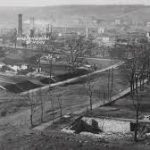 slash method in the thick forests, thus leaving behind dry scraps that were perfect kindling for wildfires. They were not careful where they left the slash either, tending to leave the scraps lying around the rail lines that carried wood from the lumber mills. Train engines of that time often gave off sparks, and when the sparks hit the slash pies, fires were nearly inevitable. The months leading up to October 1918 were very hot and dry, which made matters even worse. The fire began that October 12th, and it quickly spread due to the high winds that day. More than 200 people died in the Moose Lake area, when the fire raced into the community. Many of the local residents tried to escape the raging flames by driving down Highway 73, south of the Kettle River. The
slash method in the thick forests, thus leaving behind dry scraps that were perfect kindling for wildfires. They were not careful where they left the slash either, tending to leave the scraps lying around the rail lines that carried wood from the lumber mills. Train engines of that time often gave off sparks, and when the sparks hit the slash pies, fires were nearly inevitable. The months leading up to October 1918 were very hot and dry, which made matters even worse. The fire began that October 12th, and it quickly spread due to the high winds that day. More than 200 people died in the Moose Lake area, when the fire raced into the community. Many of the local residents tried to escape the raging flames by driving down Highway 73, south of the Kettle River. The  road had a very sharp curve that proved to be too difficult to maneuver for drivers who were speeding away from the flames surrounding them. At least 15 vehicles went off the road within minutes, which resulted in 25 deaths.
road had a very sharp curve that proved to be too difficult to maneuver for drivers who were speeding away from the flames surrounding them. At least 15 vehicles went off the road within minutes, which resulted in 25 deaths.
In all, he fire destroyed 38 towns and villages. The total dead was 453 and another 85 people were seriously burned. The area lost 4,000 houses, 6,000 barns, and 40 schools to the flames.The fire came up so quickly that there was no time to try to get the livestock out, and hundreds of thousands of farm animals also perished in the fire. It was a huge loss for area farmers. In all, the region suffered close to $100 million in damages.
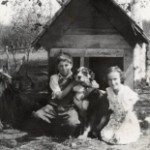
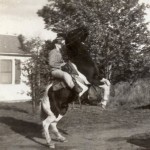 My Aunt Ruth Wolfe was raised on a farm, around horses, and she loved them, as well as most other animals. She really thrived on the country life. She worked hard, alongside her mom and siblings, especially during World War II, when her brother, my dad, Allen Spencer was serving in the Army Air Forces. She helped at the farm and also as a welder at the shipyards…one of the women known as riveters. Later in her life, when she was married, she and my Uncle Jim Wolfe lived in the country outside Casper, Wyoming. They gardened, canned, and raised farm animals. Aunt Ruth was one tough lady. She could do just about anything she set her mind to. From that hard work of farming, to canning, to haying, to playing any instrument, to painting, my Aunt Ruth was simply a multi-talented woman.
My Aunt Ruth Wolfe was raised on a farm, around horses, and she loved them, as well as most other animals. She really thrived on the country life. She worked hard, alongside her mom and siblings, especially during World War II, when her brother, my dad, Allen Spencer was serving in the Army Air Forces. She helped at the farm and also as a welder at the shipyards…one of the women known as riveters. Later in her life, when she was married, she and my Uncle Jim Wolfe lived in the country outside Casper, Wyoming. They gardened, canned, and raised farm animals. Aunt Ruth was one tough lady. She could do just about anything she set her mind to. From that hard work of farming, to canning, to haying, to playing any instrument, to painting, my Aunt Ruth was simply a multi-talented woman.
I think one of the strangest moves Aunt Ruth and Uncle Jim made was the one to Vallejo, California. I couldn’t quite figure out why a person who loved the country so much, would move to a city. Vallejo is a suburb of San Francisco, California, and very different from Casper, Wyoming or Holyoke, Minnesota. I suppose they decided that they wanted a change of pace, and I can understand that, because my family and I lived in the country for a number of years before we moved into town in Casper. For us, the city life was more…us, at least the small city life. I don’t think I would want to live in a big city like New York or San Francisco. Still, I can understand why my aunt and uncle might be drawn to the big city life, and the warmer California weather.
After a time in California, the quiet country life again drew them from the big city to the mountains of Washington state. I can’t say that the move to the mountains surprised me much, because it seems like country life was like the blood that ran through my aunt and uncle’s veins. It was a part of who they were, as 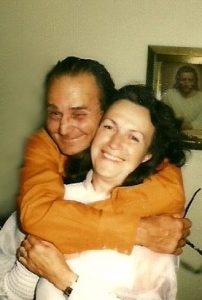
 much as their DNA was who they were. Once they settled in eastern Washington, they never moved again. They bought the top of a mountain, and built three cabins there…one for them, one for their daughter, Shirley and her husband, Shorty Cameron; and one for their son Terry and his family. For Aunt Ruth and Uncle Jim, this would be their forever home. Having been on their mountain top, I can say that I understand why they thought it was so beautiful, but in the years since I moved back to town, I know that I would not want to live permanently in the country, or on a mountain top again. Nevertheless, that was their favorite place to be. Today would have been my Aunt Ruth’s 92nd birthday. It’s hard to believe she has been gone 26 years now. Happy birthday in Heaven Aunt Ruth. We love and miss you so very much, and can’t wait to see you again.
much as their DNA was who they were. Once they settled in eastern Washington, they never moved again. They bought the top of a mountain, and built three cabins there…one for them, one for their daughter, Shirley and her husband, Shorty Cameron; and one for their son Terry and his family. For Aunt Ruth and Uncle Jim, this would be their forever home. Having been on their mountain top, I can say that I understand why they thought it was so beautiful, but in the years since I moved back to town, I know that I would not want to live permanently in the country, or on a mountain top again. Nevertheless, that was their favorite place to be. Today would have been my Aunt Ruth’s 92nd birthday. It’s hard to believe she has been gone 26 years now. Happy birthday in Heaven Aunt Ruth. We love and miss you so very much, and can’t wait to see you again.
